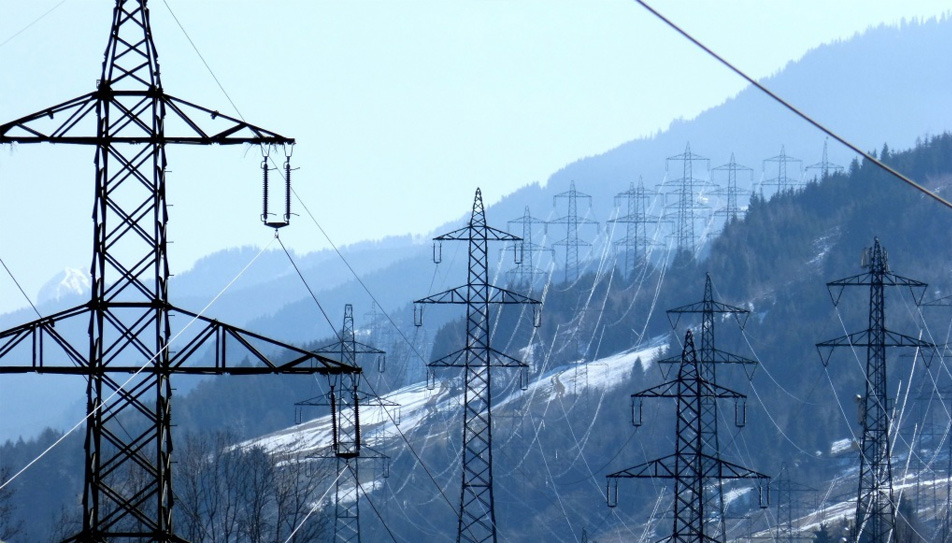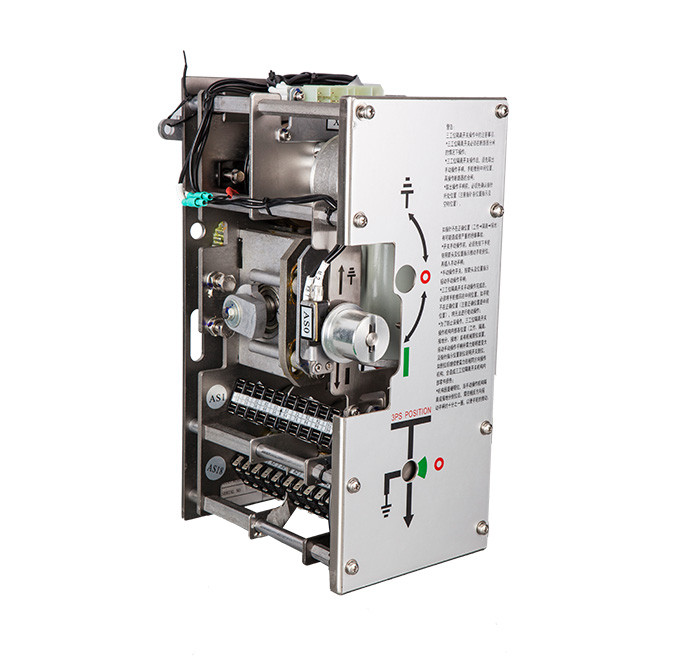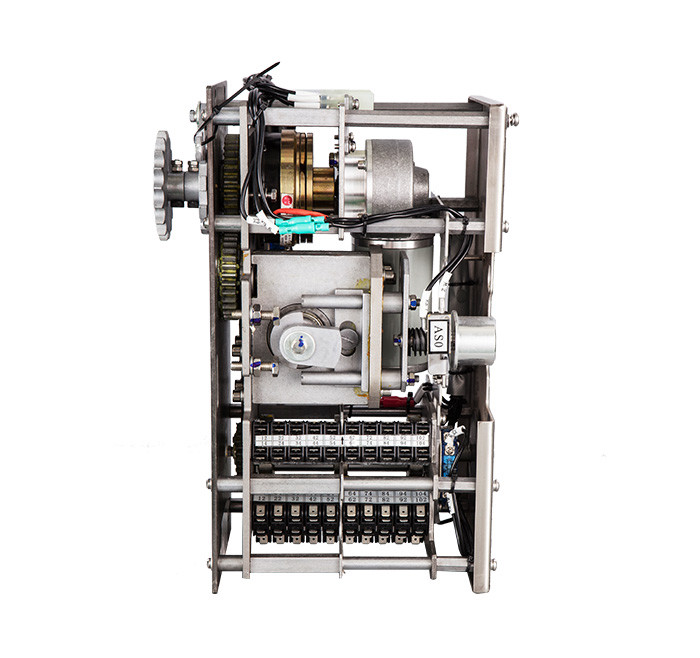CJ10B Three Position Mechanism
CJ10B multiturn output type electrically operated three-station mechanism can be used for the closing and breaking of isolation switches, grounding switches and load switches required by 12kV, 24kV, 40.5kV ring main units and gas filling cabinets. This mechanism is a three-station mechanism, and one mechanism can operate an isolation switch and a grounding switch, so as to realize the functions of closing and opening of the isolation switch and closing and opening of the grounding switch. The mechanism has two operation modes at the same time: manual and electric. This mechanism is a single-motor three-station mechanism with multi-turn output. The motor directly operates the switch assembly through the electromagnetic clutch, controls the multi-angle output through the travel switch and the mechanical limit device, and replaces the auxiliary switch with the travel switch to accurately reflect the position of the mechanism and the switch. The mechanism is equipped with an electromagnetic clutch, which can reliably ensure the output of the three positions of the mechanism.
Technical Parameters
1. The output ± of this mechanism is 12.5 circles (can be customized according to user requirements).
2. Output torque: 13.6N.m.
3. Rated voltage dividing and closing time≤ 5S.
4. Use CSK type magnetic blow switch. The current that can be continuously passed through the contact is 10A at AC220V and 3A at DC220V.
5. Replace auxiliary switches with HLXW20-11M micro switches, a total of 30 pcs.
6. The secondary connector is 21P socket (AMP).
7. Technical parameters of energy storage motor
|
Model |
Type 68ZY-CJ-D |
|
Rated operating voltage |
DC220V、DC110V |
|
Rated output power of the motor |
200W |
|
Normal operating voltage range |
85%-110% |
Diagram
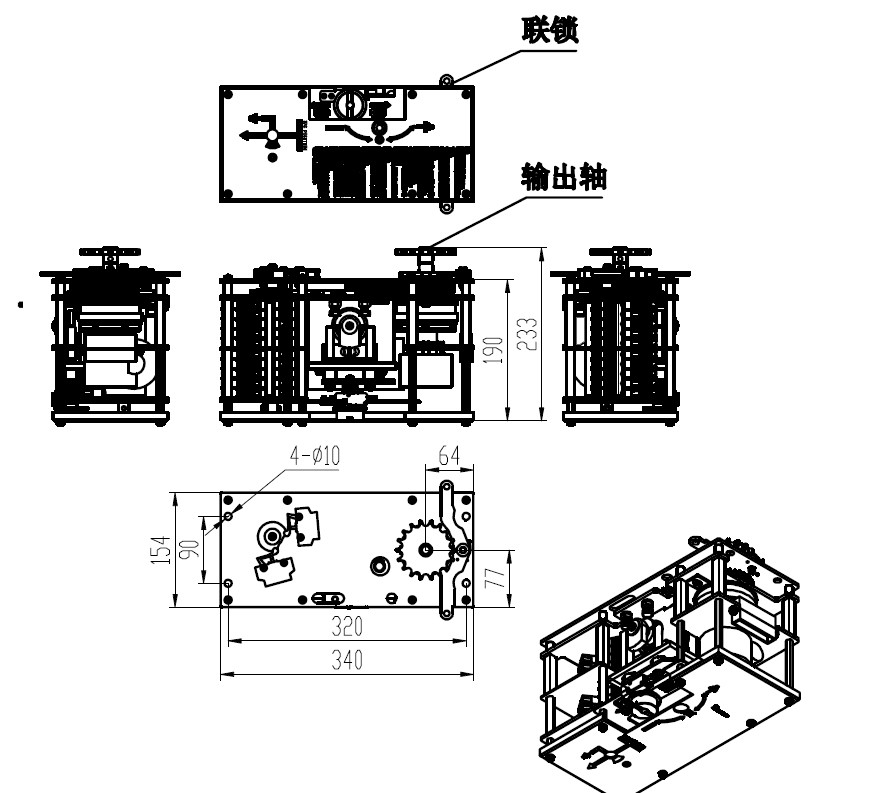
Engineering Drawings
Hyundai Heavy Industries Changzhou Metro Line 1 Project CJ10B mechanism
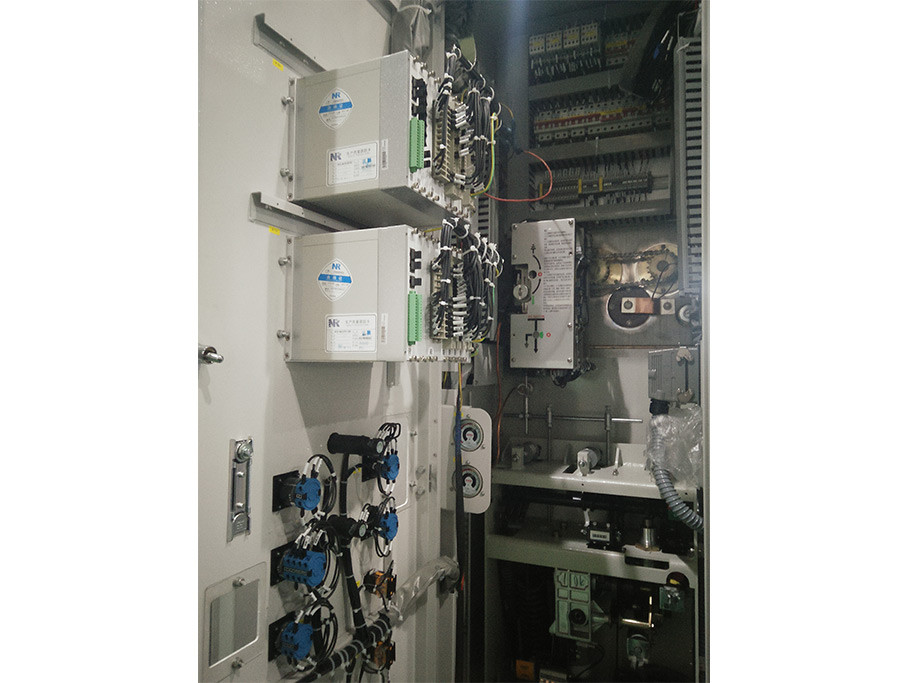
Ordering instructions
1. Control voltage and motor voltage;
2. an output angle;
3. Installation size;
4. Outdoor or indoor use;
5. The output mode of the output shaft;
6. The starting position (angle) of the output shaft when the opening position is opened;
7. The logarithm of the auxiliary contact of the auxiliary switch;

